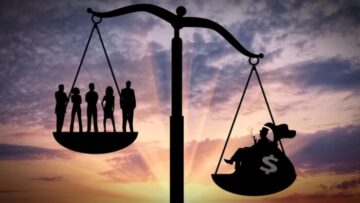by Jochen Szangolies

I have once again been thinking about power, and once again I feel ill at ease with it. Yet while I do consider myself somewhat badly equipped for this pursuit, I nevertheless feel, “in these trying times”, a certain responsibility to not cozy up with pursuits closer to my heart and talents, but invest some portion of my time and ability into examining the mechanisms of control as they are exerted in the world. After all, as before, one may hope that slow and steady going may substitute for knack and knowledge, and perhaps even help those otherwise sidelined to enter the conversation.
The prompt for the present swerve out of my lane was provided by a colleague’s lunchtime question, after the conversation had inevitably landed on the topic of what flavor of future dystopia awaits. “But how,” he started (or nearly enough so), “are the billionaires in their bunkers going to keep themselves in charge?” After all, what’s to stop the armies of servants they depend upon to uphold their lavish lifestyles from just, well, murdering them and taking their shit?
The question invites an immediate followup: what’s stopping us now? Not murdering, as such—but even just applying equal standards to the wealthy stands to free up resources capable of addressing a great many injustices in the world. According to a recent estimate by the US Department of the Treasury, the top 1% of earners dodge about $163 billion in annual taxes. (If you, like virtually everyone, have trouble conceptualizing these sorts of numbers, I find it helps to convert them to time scales: if a dollar is a second, then a million dollars are about eleven and a half days, while a billion dollars are roughly 31.7 years; the avoided sum of taxes then takes us back 5165 years, back to when the first phases of Stonehenge started construction. By contrast, the median US income for a full-time worker is about $63,000, or roughly 17.5 hours.)
Clearly, there is much good that could be done with that sort of money. As a semi-random example, according to estimates it would take from 10 to 30 billion dollars annually to end homelessness in the US, essentially eradicating a major source of suffering. And nobody would have to get murdered—or even unduly inconvenienced: this is money that is already legally owed, simply by having the 1% pay their fair share. Studies project an added revenue of up to $12 dollars per dollar invested in audits of high income individuals. So why aren’t we out there demanding equal treatment for the wealthy? Read more »



